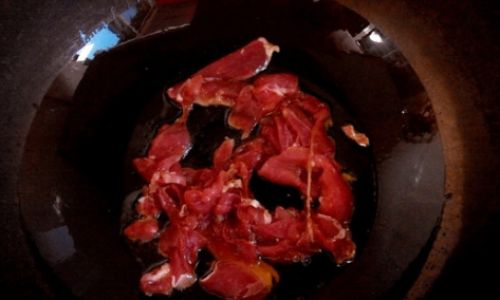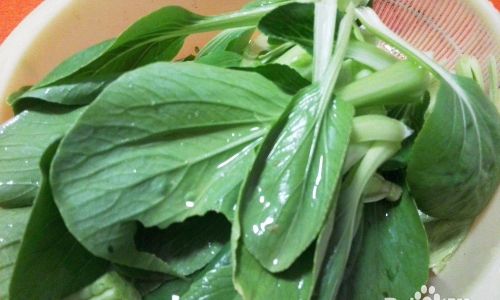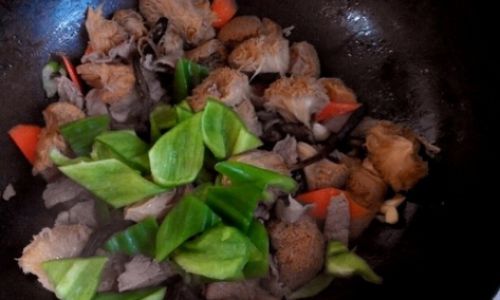Introduction
The culinary world thrives on innovation, blending textures, flavors, and cultures to create dishes that delight the senses. One such harmonious pairing is the combination of cabbage and lion’s mane mushrooms, a union that marries the earthy sweetness of cabbage with the meaty, seafood-like richness of lion’s mane. This dish, rooted in simplicity yet elevated by technique, offers a nutritious and satisfying meal that caters to vegetarians, vegans, and meat-lovers alike. In this comprehensive guide, we will explore the step-by-step process of preparing cabbage stir-fried with lion’s mane mushrooms, a recipe that celebrates umami depth and crisp freshness. From selecting the finest ingredients to mastering the stir-fry technique, this article will equip you with the knowledge to recreate this dish in your kitchen, ensuring a balance of taste and texture that will leave diners impressed.
Understanding the Ingredients
Before diving into the cooking process, it is essential to familiarize yourself with the star players of this dish: cabbage and lion’s mane mushrooms.
-
Cabbage: A cruciferous vegetable available in various varieties—such as green, red, Napa, or Savoy—cabbage brings a crisp texture and mild, slightly sweet flavor to the dish. For this recipe, we recommend using Napa cabbage, known for its tender leaves and delicate crunch, which complements the heartier mushrooms.
-
Lion’s Mane Mushrooms (Hericium erinaceus): Renowned for their unique appearance, resembling a cascade of white, shaggy threads, lion’s mane mushrooms offer a meaty texture and a flavor profile often likened to seafood, particularly lobster or crab. Beyond their culinary appeal, these mushrooms are prized for their potential health benefits, including cognitive support and anti-inflammatory properties.

-
Aromatics and Seasonings: Garlic, ginger, and green onions form the aromatic backbone of the dish, infusing it with fragrant depth. Soy sauce or tamari adds savory umami, while a drizzle of sesame oil imparts a nutty finish. A touch of chili flakes (optional) can elevate the heat, balancing the dish’s mild flavors.
Ingredients List
To serve 4-6 people, gather the following:
- 1 medium head of Napa cabbage (approx. 1.5 lbs/680g), thoroughly washed and dried
- 8 oz (225g) fresh lion’s mane mushrooms
- 3 garlic cloves, minced
- 1-inch (2.5cm) piece of fresh ginger, peeled and grated
- 3-4 green onions, sliced diagonally (separate white and green parts)
- 2 tbsp soy sauce (or tamari for gluten-free)
- 1 tbsp sesame oil
- 2 tbsp vegetable oil (such as avocado or peanut oil)
- 1 tsp red pepper flakes (optional)
- Salt and black pepper to taste
Equipment Needed
- Wok or large skillet
- Chef’s knife and cutting board
- Mixing bowls
- Tongs or spatula for stirring
Preparation: Mise en Place
The key to a flawless stir-fry lies in meticulous preparation. Chop and measure all ingredients before igniting the stove.
-
Preparing the Cabbage:
- Remove any wilted outer leaves from the cabbage.
- Halve the cabbage lengthwise, then slice it crosswise into ½-inch (1.25cm) strips. Separate the leaves to ensure even cooking.
-
Preparing the Lion’s Mane Mushrooms:
- Gently brush the mushrooms to remove any debris (avoid washing, as they absorb moisture).
- Tear the mushrooms into bite-sized clusters, mimicking the texture of shredded meat. Smaller pieces will cook faster and develop a crispier exterior.
-
Aromatics:
- Mince the garlic and grate the ginger.
- Slice the green onions, reserving the white parts for sautéing and the green parts for garnish.
Cooking Process: Step-by-Step Guide
Heating the Wok
Place your wok or skillet over high heat. Allow it to become scorching hot—a critical step for achieving the coveted wok hei (breath of the wok), which imparts a smoky, charred flavor. Add the vegetable oil and swirl to coat the pan evenly.

Sautéing the Aromatics
Once the oil shimmers, add the white parts of the green onions, garlic, and ginger. Stir-fry for 30 seconds until fragrant but not browned. Avoid overcooking, as burnt garlic will impart bitterness.
Cooking the Lion’s Mane Mushrooms
Add the mushrooms to the wok, spreading them in a single layer. Allow them to cook undisturbed for 2-3 minutes to develop a golden-brown crust. Stir occasionally, ensuring even browning. Lion’s mane mushrooms release minimal moisture, so resist the urge to add liquid—this concentrates their flavor.
Incorporating the Cabbage
Push the mushrooms to one side of the wok and add the cabbage to the empty space. Toss gently to coat the cabbage in oil, then combine with the mushrooms. Stir-fry for 4-5 minutes until the cabbage wilts slightly but retains its vibrant green hue. Overcooking will result in mushiness, so aim for a tender-crisp texture.
Seasoning the Dish
Drizzle the soy sauce evenly over the mixture, followed by a splash of sesame oil. Toss to combine, ensuring the ingredients are thoroughly coated. Taste and adjust seasoning with salt, pepper, and red pepper flakes if desired.
Final Touches
Remove the wok from heat and stir in the reserved green onion tops. The residual heat will gently wilt the onions, preserving their freshness.
Serving Suggestions
This dish shines as a standalone vegetarian main or a versatile side dish. Pair it with:
- Steamed jasmine rice or quinoa
- Noodle dishes like lo mein or udon
- Grilled tofu or tempeh for added protein
- A side of pickled vegetables or kimchi for contrast
Expert Tips for Perfect Results
-
Mastering the Stir-Fry:
- Use high heat to seal in flavors and textures.
- Avoid overcrowding the pan, as this steams ingredients rather than searing them.
-
Mushroom Preparation:

- Lion’s mane mushrooms can be substituted with oyster or king trumpet mushrooms if unavailable.
- For a deeper flavor, roast the mushrooms separately before adding to the stir-fry.
-
Cabbage Variations:
- Experiment with red cabbage for a pop of color or Savoy cabbage for a heartier bite.
- For a quicker meal, use pre-shredded cabbage bags.
-
Dietary Adaptations:
- Gluten-free: Use tamari instead of soy sauce.
- Vegan: Ensure your soy sauce is certified vegan.
- Low-sodium: Reduce soy sauce and season with a pinch of salt.
The Science Behind the Flavors
This dish thrives on the interplay of umami and freshness. Lion’s mane mushrooms contain glutamic acid, a natural flavor enhancer that amplifies the dish’s savory notes. The cabbage’s high water content steams lightly during cooking, creating a tender contrast to the mushrooms’ caramelized edges. Soy sauce introduces sodium glutamate, further intensifying the umami profile, while sesame oil adds aromatic complexity.
Health Benefits
Beyond its gastronomic appeal, this dish is a nutritional powerhouse:
- Cabbage: Rich in fiber, vitamins C and K, and antioxidants, it supports digestion and immune function.
- Lion’s Mane Mushrooms: Studies suggest they may boost cognitive health, reduce inflammation, and aid digestion.
- Garlic and Ginger: Offer anti-inflammatory and antimicrobial properties.
Troubleshooting Common Issues
- Soggy Cabbage: Ensure the pan is hot enough to evaporate moisture quickly.
- Bland Flavor: Increase soy sauce or add a splash of rice vinegar for acidity.
- Mushrooms Not Browning: Pat them dry before cooking and avoid stirring too frequently.
Conclusion
Cooking cabbage with lion’s mane mushrooms is a celebration of texture and taste, a dish that transforms humble ingredients into a culinary masterpiece. By mastering the stir-fry technique and balancing flavors, you can create a meal that is as nourishing as it is delicious. Whether you’re a seasoned home cook or a novice in the kitchen, this recipe invites creativity—adjust seasonings, experiment with add-ins, or serve it in bowls, wraps, or alongside grains. The result is a testament to the magic of simplicity, where vegetables and fungi unite to create a symphony of flavor. So, heat your wok, gather your ingredients, and embark on a journey to savor the delicate fusion of cabbage and lion’s mane mushrooms. Your taste buds will thank you.






0 comments